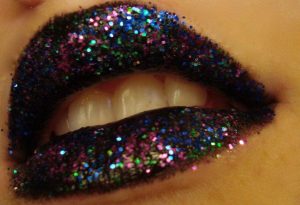We all know it, we all live it and some of us hate it. It’s glitter: that sparkling sand that seems to get anywhere and everywhere.
It’s in our crafts, our nail polish and our fishing lures. It even has its own brand of music called “Glitter Rock” (e.g. the Late David Bowie and his persona Ziggy Stardust).
We have a distinct love-hate relationship with glitter. We wear it for makeup and fashion to catch people’s eyes, and then use it as a protesting weapon to coat our enemies in the impossible-to-remove carpet-destroying powder, a “Glitter Bomb” if you will.
Why would we want to ban something we use so frequently? Because it can be really dangerous.
For one, in large quantities glitter can be dangerous to the human body. It can work its way into your respiratory system or get a little too close to your good ol’ peepers, although this typically only happens with craft and commercial grade glitter.
Cosmetic grade glitter is fairly harmless to the human body with its smaller grain size. But then what happens to all that glitter when it is vacuumed up or scattered to the wind like ashes?

I’m guessing you probably wash cosmetic glitter off of your hands and body in the sink or shower. Depending on where you live and your sewer situation, your water is likely classified as greywater and dumped into the ocean. Though this is less of a problem for us in Utah, think of all the glitter people don’t need anymore and throw away. Or, like I mentioned before, the glitter bomb which is now loose to the wind. Your glitter is now likely in the ocean or coating the food of wild animals.
Glitter is a micro-plastic made of polyethylene terephthalate (PET), also called Mylar. You know all that fuss about disposable straws ending up in the ocean? Well 92.4 percent of floating plastic waste is micro-plastic. That’s not straws. Part of it’s glitter, and what’s worse is that it is about the same size as the food of many fish, and the fish get confused enough to eat it. This is the main reason we need to ban the production of glitter. Tricia Farrelly, a researcher and environmental anthropologist at Massey University, as well as other fellow scientists, have found that glitter disrupts the environment’s “Hormone Disruptors.” This can cause cancer and a myriad of birth defects in a variety of animals.
A ban on micro-plastic glitter would not end sparkling eyeliner and fishing lures. We just need to find a good replacement and cut out all of the PET and aluminum. Fortunately, we are already halfway there.
 Wikimedia Commons
Wikimedia Commons Good Glitter.com sells dozens of different glitters made from eucalyptus trees, making their glitter 100% compostable and biodegradable. Another option is to go back to ancient times and use powdered Mica or the crushed up shells of chromatic beetles as glitter. But until we have an excess of shiny beetle shells, let’s stick to shiny koala-food.
m.faulkner@dailyutahchronicle.com
The post All That Glitters: Banning the Glitz in Glam appeared first on Daily Utah Chronicle.
